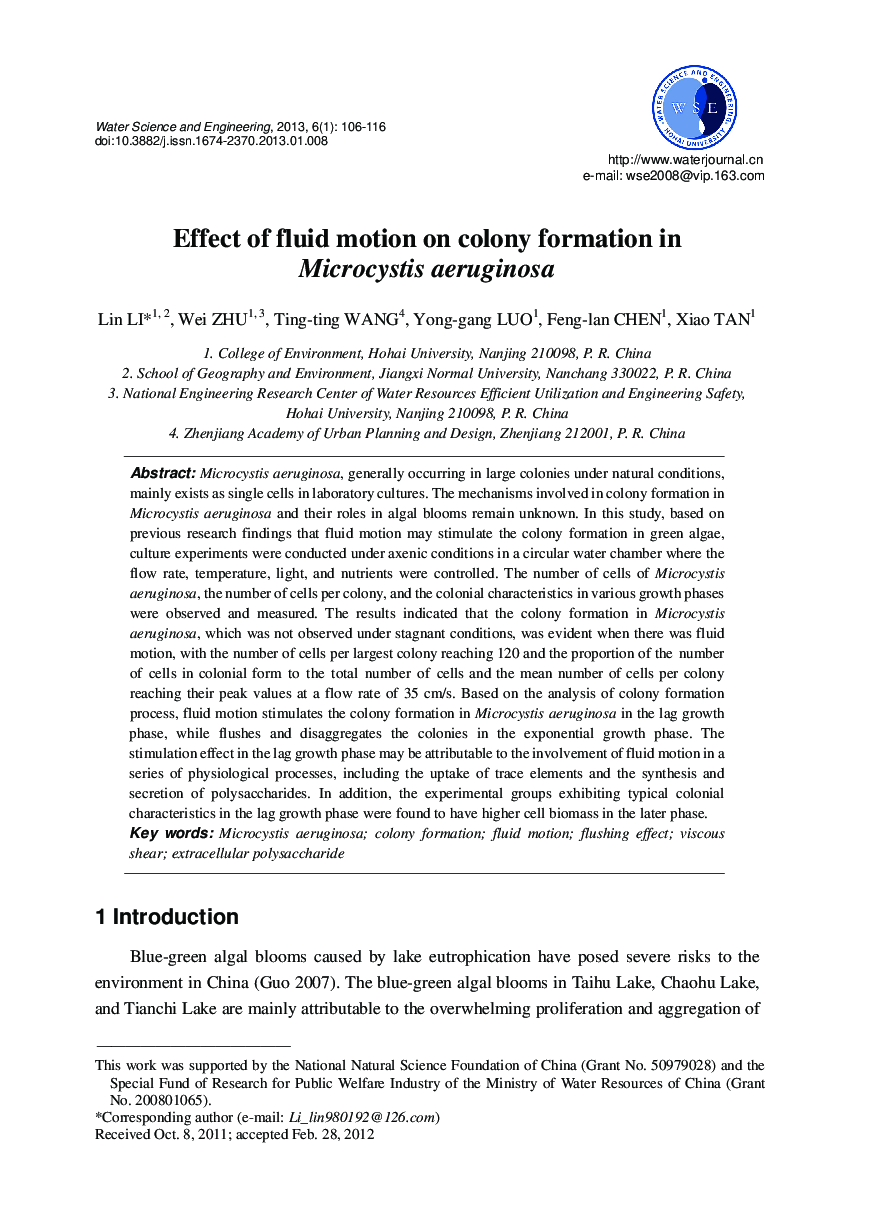| Article ID | Journal | Published Year | Pages | File Type |
|---|---|---|---|---|
| 313440 | Water Science and Engineering | 2013 | 11 Pages |
Microcystis aeruginosa, generally occurring in large colonies under natural conditions, mainly exists as single cells in laboratory cultures. The mechanisms involved in colony formation in Microcystis aeruginosa and their roles in algal blooms remain unknown. In this study, based on previous research findings that fluid motion may stimulate the colony formation in green algae, culture experiments were conducted under axenic conditions in a circular water chamber where the flow rate, temperature, light, and nutrients were controlled. The number of cells of Microcystis aeruginosa, the number of cells per colony, and the colonial characteristics in various growth phases were observed and measured. The results indicated that the colony formation in Microcystis aeruginosa, which was not observed under stagnant conditions, was evident when there was fluid motion, with the number of cells per largest colony reaching 120 and the proportion of the number of cells in colonial form to the total number of cells and the mean number of cells per colony reaching their peak values at a flow rate of 35 cm/s. Based on the analysis of colony formation process, fluid motion stimulates the colony formation in Microcystis aeruginosa in the lag growth phase, while flushes and disaggregates the colonies in the exponential growth phase. The stimulation effect in the lag growth phase may be attributable to the involvement of fluid motion in a series of physiological processes, including the uptake of trace elements and the synthesis and secretion of polysaccharides. In addition, the experimental groups exhibiting typical colonial characteristics in the lag growth phase were found to have higher cell biomass in the later phase.
